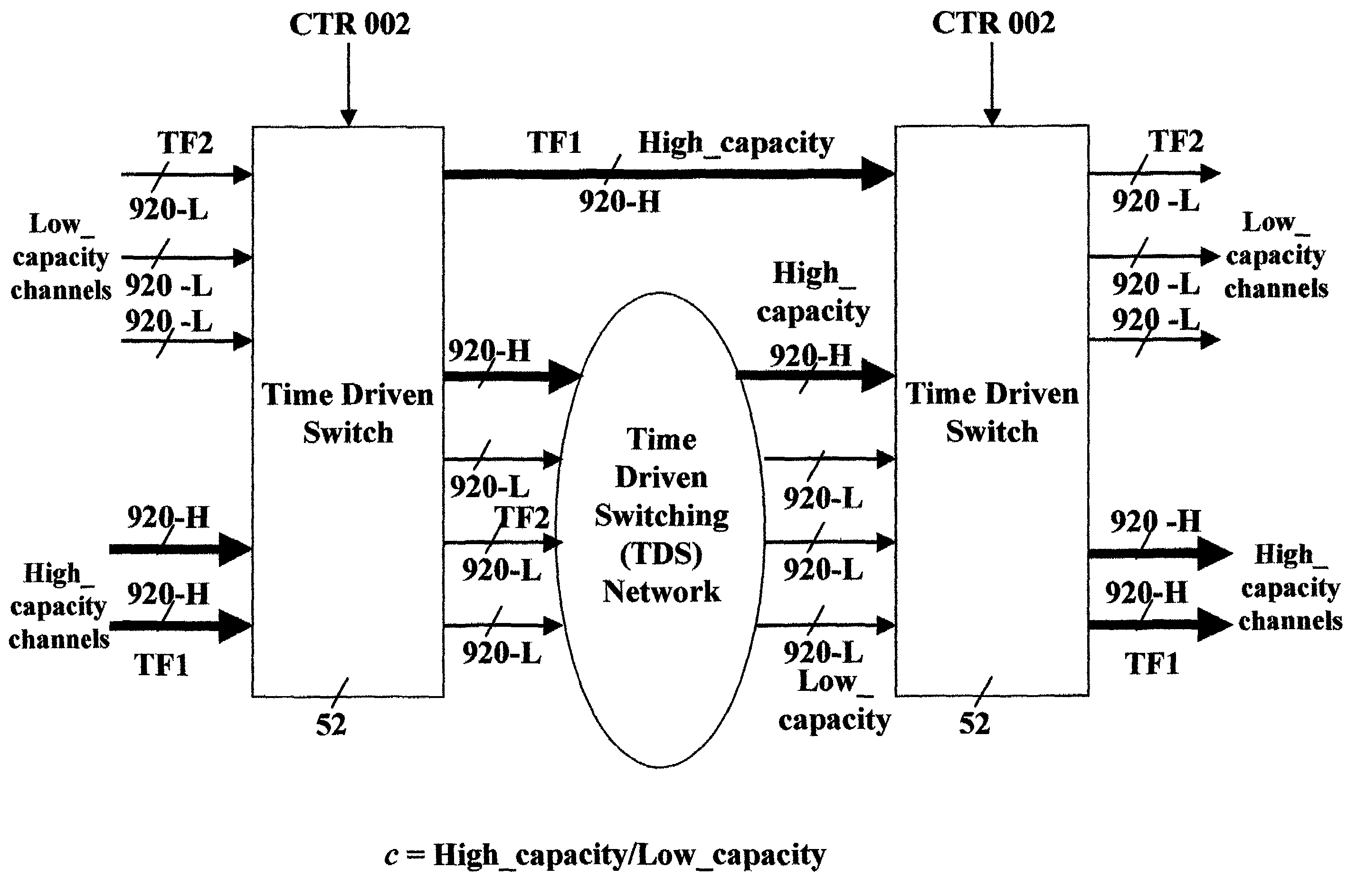Time-based grooming and degrooming methods with common time reference for optical networks
a technology of optical networks and time reference, applied in data switching networks, time-division multiplexing selection, multiplex communication, etc., can solve the problems of inability to guarantee or limit the end-to-end delay and jitter, inability to carry multimedia traffic in their native packet format, and inability to easily enhance to support multiple services and carry multimedia traffic, etc., to achieve increased robustness and independence, the effect of high capacity
- Summary
- Abstract
- Description
- Claims
- Application Information
AI Technical Summary
Benefits of technology
Problems solved by technology
Method used
Image
Examples
Embodiment Construction
[0149]While this invention is susceptible of embodiment in many different forms, there is shown in the drawings and will be described herein in detail, specific embodiments thereof with the understanding that the present disclosure is to be considered as an exemplification of the principles of the invention and is not intended to limit the invention to the specific embodiments illustrated.
[0150]The present invention relates to a system and method for switching and forwarding data units over a network with optical WDM (wavelength division multiplexing) links. The switches of the network maintain a common time reference (CTR), which is obtained either from an external source (such as GPS—Global Positioning System, or GLONASS, or Galileo) or is generated and distributed internally. The common time reference is used to define time intervals, which include super cycles, time cycles, time frames, sub-time frames, and other kinds of time intervals. The time intervals are arranged in both s...
PUM
 Login to View More
Login to View More Abstract
Description
Claims
Application Information
 Login to View More
Login to View More - R&D
- Intellectual Property
- Life Sciences
- Materials
- Tech Scout
- Unparalleled Data Quality
- Higher Quality Content
- 60% Fewer Hallucinations
Browse by: Latest US Patents, China's latest patents, Technical Efficacy Thesaurus, Application Domain, Technology Topic, Popular Technical Reports.
© 2025 PatSnap. All rights reserved.Legal|Privacy policy|Modern Slavery Act Transparency Statement|Sitemap|About US| Contact US: help@patsnap.com



